Update 20 April, 2020: Covid-19. We saw it coming, but we didn’t see it coming THAT bad when we first wrote this original post about Amazon predictions for 2020. Read here the most recent post about what Amazon Sellers should do to keep their business alive and even stronger during the Coronavirus Pandemic:
What are the hottest Amazon predictions for 2020 by the top experts? What challenges will sellers will face in 2020? In order to understand this, let’s take a look first at the past few years, that have been extremely exciting for Amazon Sellers and E-commerce. Back in 2017, a brand new wave of sellers had already started to show up in the largest online marketplace of the western world, realizing what huge profits their oriental neighbors were able to make. In 2018 many have discovered the threats lying within this incredibly fast growing business, that has costed thousands or even millions of dollars in loss to some.
2019 has definitely been a turning point with so many updates and changes in the Amazon marketplace and selling community that we would have to make an entire blog post for that; still here we will make a summary of what sellers need to keep in mind to face 2020 in the best way, working smarter and optimizing their incomes. In Short: how the facts that happened in 2019 lead to 2020? How can you dominate the Amazon marketplace in 2020?
Topic List:
1. Some of the Main Changes in 2019 2. Communicating with Buyers and Influencing Reviews will be Harder in 2020 3. Only registered brands will be able to sell on Amazon in the Future 4. New Challenges for Amazon Advertising in 2020 5. How External Traffic and Micro-Targeting will be Important for Your Marketing 6. 2020 Updates for Chat Bots & Messaging Tools 7. Black Hat in 2020 is really dying? 8. 2020 Top Tips for Product Sourcing 9. New Opportunities & Marketplaces to look in 2020 10. Conclusions
1. Short Review of 2019’s Main Changes on Amazon
Amazon Marketplace’s Growth & Expansion
We were already expecting this: Amazon gross revenue has been growing exponentially over the past years reaching a staggering $279+ Billion including Marketplace & AWS services:
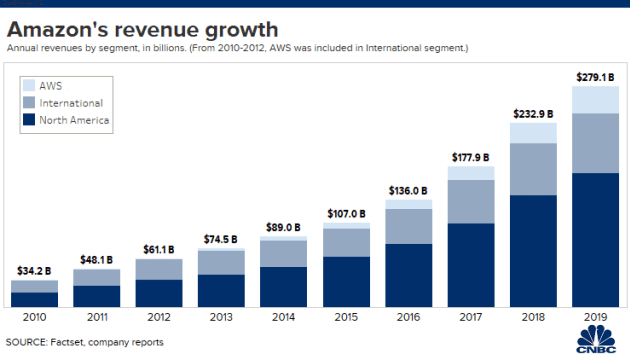
With more than 2.5 million active sellers and 120 billion products sold (source: Oberlo), Amazon has entered a new country in 2019, Singapore, while it continues to open new ones every year and to expand the existing marketplaces. Sales in Black Friday have topped $20 billion if we consider sales happened between Thanksgiving, Black Friday and Cyber Monday in 2019.
What does this mean for sellers? That the giant platform might be a crowded space, but the opportunities to sell and to make substantial gains are as large as they’ve never been. True also, that it’s becoming a thoug game to play – we will see more about this later on.
Algorithm Updates
In 2018 there have been rumors about Amazon updating the A9 algorithm to A10 in 2019, this didn’t happen yet – at least it’s not been officially communicated by Amazon; still we can see how the following elements affect ranking more and more significantly: Sellers Authority, Sales History, Impressions, Conversion Rate, PPC, Internal/External Sales, you can read more on this post about Amazon A10 algorithm and how to get the best of it.
Seller Account Restrictions & Review
Opening a new seller account on Amazon has become hard, opening vendor account even harder. What else become harder in the past year? Launching new products. In early 2019 many sellers have experienced account suspension right after launching new products by making use of launch services that relied heavily on rebates and giveaways. This was initially understood as another unvoiced update – on the Sales Velocity limit supposedly. But it wasn’t entirely like that: sales velocity limitation has always been there, stricter for new sellers rather than sellers with substantial history. Instead, Amazon has been tightening controls against accounts that suddenly increase their sales, reviews, product page sessions, by using repeated buyer accounts with same delivery address, credit cards etc. For further explanation about sales velocity and account suspension, you can read this post.
New PPC Advertising Implementations in 2019
How many new PPC features have we seen launched in 2019 within Seller Central only?In case you’ve missed some of them or you just started using Amazon PPC Ads since the past year, here’s a short list of newest features on PPC Ads since 2019:
– Dynamic Bidding – Placement Selection (TOS, Products, Other) – Product Placement Ads – Product Targeting – New Reports Types – DSP Display Ads (beta) on Seller Central – New Keywords suggestions and custom bidding on campaign creation (not only Broad Match) – Search Terms Tab – Editorial Recommendation – Channel selection (Amazon & Amazon Business) – Video Ads …did we miss anything?
What does this mean for sellers? All these features mean lots of new amazing opportunities to advertise products and to make them more relevant to the final users. But also, it makes it easier to apply the “idiot tax” to both new and inexperienced sellers who are having to deal with a lot of new buttons and options, probably wasting a nice part their budget at some stage. If you aren’t sure on how to start up your PPC Ads, take a look at our full beginners guide to Amazon PPC Sponsored Products.
Now that we have revised in short some significant changes that took place in 2019, let’s take a look at what is going happen in 2020.
2. Communicating with Buyers and Influencing Reviews will be Harder in 2020
JungleScout was between the first ones to talk about this in their article about the 5 Amazon changes to look for in 2020: Amazon would put an end to its Buyer-Seller Messaging Service. Regarding this topic, Henson Wu from FeedbackWhiz tells us:
Amazon will be enforcing more on selling policies. We saw that in 2019, Amazon started to heavily enforce buyer-seller messaging language and other areas of terms of service. I believe Amazon is trying to tighten up all the loopholes and loose ends so certain sellers cannot manipulate or have advantages. This does make selling on Amazon more difficult in the short term as sellers will need to pay close attention to the policies to avoid suspension, but this should make selling easier in the long run.
Once again as a seller, be careful about how you use Seller Central and what kind of messages you send to your buyers. This applies as well to any type of inserts / thank you cards you might be adding to your package. Big Brother is watching you. Amazon is trying to internalize everything, look at the new Request a Review button introduced on November 13, 2019. This might seem shocking to many sellers, but we believe that it is going to make the entire game of selling on Amazon a lot easier in the long run.
Henson continues with:
Amazon has done a lot in the last few years to weed out fake reviews and manipulation. There are still some loopholes that need to be addressed but overall, Amazon has done a good job making the playing field level in terms of getting reviews. Ultimately, you just want to make sure you are selling a quality product and doing everything you can to improve it. Reviews always average out over time and good products/bad products will be easier to distinguish. Make sure you have fully optimized your automated review request emails. Since Amazon is enforcing on language, you need to make sure your emails as personalized but do not contain incentivized or suggestive language. You also now only have 1 opportunity per order to request a review, so make sure you don’t waste that opportunity with a generic request email.
One last thing about reviews: you sure know by now that the new “ratings” are taking more of the space that belonged to reviews only initially. Ratings are way easier for the end-user to create, quicker, less biased. And this is what you ultimately want: to make it easy for ANY customer to express their feedback, almost automatically. The results? More and more ratings.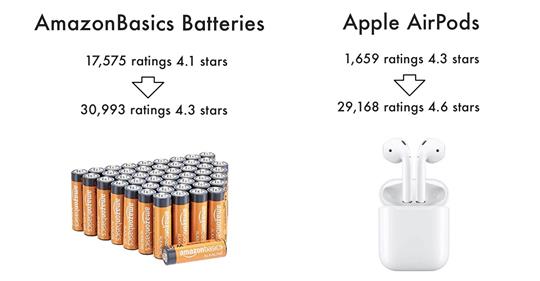
Image from https://www.marketplacepulse.com
A few last tips for sellers in 2020 by Henson Wu:
Be careful with asking for reviews now. Although the buyer-seller messaging TOS has not changed, Amazon is now strictly enforcing the rules, so make sure you understand what you can and cannot say. Make sure to protect your Amazon business by keeping watch with the reviews you are getting, making sure no one is changing your listing page information or categories and keeping an eye on competitors selling the same products.
3. Only registered brands will be able to sell on Amazon
At the current stage this remains an undisclosed rumor that both Chris Thomas from The Australian Seller and I agreed on, during our last conversation on The Australian Seller’s podcast. Having your brand registered on Amazon is vital for your success. So foundamental, that you won’t even hope to be as good as the average seller if you don’t have your brand registered on Amazon yet. Registered brands have a lot more protection against illegitimate attacks, more data to analyze (Brand Analytics is becoming crucial to your internal / external marketing decisions as we will see later), and a lot more Advertising tools – way more than the basic Sponsored Products PPC Ads- to explore.
Ultimately, it seems that some new sellers are getting this message when trying to upload their listings without having applied for Brand Registry yet “Amazon must approve your brand before you can use it to list products…”: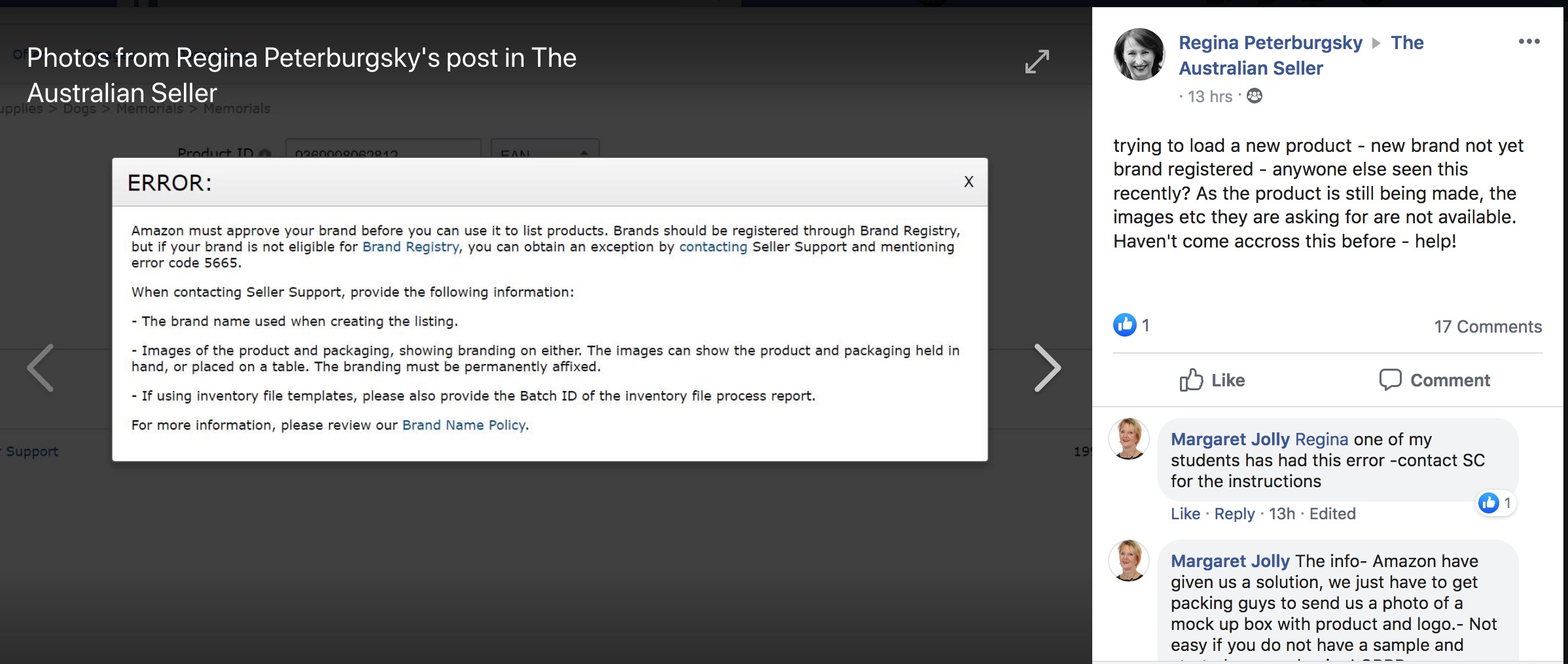
Image from The Australian Seller (Facebook Group)
You can read more on our blog post for a quick guide on how to get your brand registered and protected on Amazon.
Andy from FBAulous training in Singapore agrees as well on the importance that brands will have from this year:
To keep up with all the black hat tricks and illegitimate sellers, in 2020 we may see Amazon raise the bar to only allow legally registered companies to register for an Amazon Account (Taiwanese sellers are by about 80% there). Every seller must have a brand trademark soon in Amazon. My guess is that individuals may have difficulties registering for a new Amazon account, especially in the U.S.
Registered brands will have substantial competitive edge against non-registered brands as we are going to see in the following paragraph about Sponsored Products Ads.
4. New Challenges on Amazon PPC Sponsored Products Advertising in 2020
We all agree on one thing: as more sellers join Amazon and need to invest in Advertising, Sponsored Products Ads are getting more expensive. The space for organic results is getting smaller. Average ACoS% is getting higher in every category. CPCs are getting more expensive. This simple yet powerful screenshot taken a few months back will help you see the current trend of Amazon search results:
Source: Linkedin Feed
To be entirely fair, Amazon recently removed the section dedicated to Amazon Brands only. At least for now.
Amazon’s Advertising becoming more expensive does make sense if you consider Amazon’s plan to be dominant in an Market of Online Advertising that has been monopolized by its two main competitors (Facebook and Google) until now. Amazon is indeed increasing its market share by offering new tools, new placements, new serious opportunities to brands to promote their products & retarget specific audiences, while approaching new spaces (media buying and so on):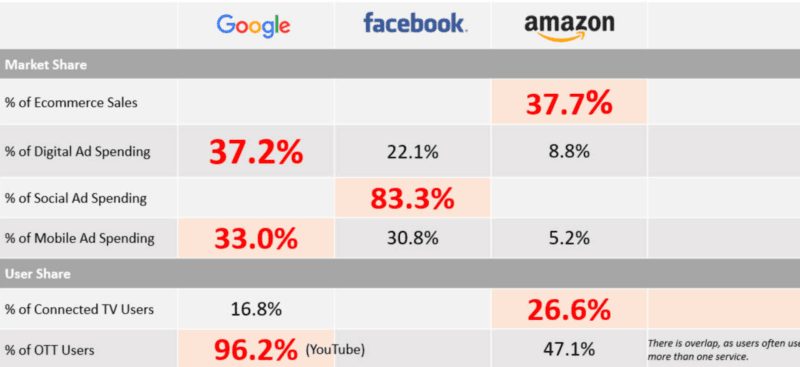
Amazon is providing almost 40% of Ecommerce Sales in the U.S. but has around 14% of total Ad Spending. Big gap that any company would feel the need to fill. And you can be sure that Amazon will go all in for this.
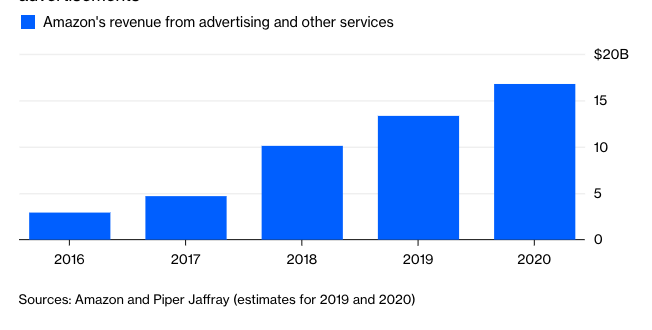
We said before how essential it is for ALL sellers to understand the new introductions on the advertising platform and to understand all the constant changes in order to not waste budget nor waste opportunities to sell. Saying it with Liran Hirshkorn from ZonMarketer.com:
Once again 2019 included a year full of changes on the platform and we can expect more to come in 2020. Just recently Amazon removed putting their own private label products in a “from our brands” section as a reaction to negative media documenting how Amazon favors itself over its 3rd party sellers. There were many changes on the Amazon advertising side, Amazon attribution, posts beta, and more changes than we can count – the one thing we know for sure about Amazon – the only constant is change. The biggest benefit for brands in 2020 will be taking advantage of new marketing opportunities that your competition isn’t paying attention to – video ads on mobile is one area we’ve already seen this with, posts beta, and Amazon live – if brands continue to pay attention and execute on these “blue ocean” opportunities, they can have some big wins in 2020.
Amazon Video Ads
Having your brand registered will give you as well more insights and data that will be crucial to operate a correct targeting and avoid to waste your budget: Brand Analytics, Brand Advertising, Vine Review Program, and the newly developed feature for registered brands called Amazon Attribution. This is something we are really excited about as it promises to give insights about shopping and sales impact analysis across search, social media, display, video and email ads.
Amazon.com
Let’s get more into the details of what 2020 will bring in for Amazon Advertisers. We have talked to Brian R. Johnson from Canopy Management about the new features that will challenge sellers in this year:
Amazon is investing heavily into the brand-aspects of the advertising platform. Those brands that are brand registered will get a competitive advantage in 2020. Especially in regards to competitive intel and expanded or new ad types (e.g. video). I publish an annual State of the Union on an annual rollup of changes to the ad platform. My Facebook community, “Amazon PPC Troubleshooting”, is a great starting point. The biggest challenge will be for those brands not already trademarked and brand registered to get that implemented.
To keep a competitive advantage, sellers will need to master activation & tuning of all ad types available – not just relying on the basics of an automatic and manual campaign alone. Here’s some of our favorite tips for Amazon PPC taken from Brian Johnson’s State of The Union:
- Understand or at least start testing your manual campaign strategy when it comes to placements, dynamic bidding, product targeting, category targetings.
- Make one campaign for each product, do not mix all of your products or even products from the same category in the same campaign
- Put more efforts on Brand Campaigns.
- Understand your match groups for Automatic Campaigns (close, loose, substitute, complements).
- Make use of each placement you have for your Sponsored Brand Ads (product targeting, category targeting, keyword targeting, video ads)
- Know your numbers, and understand ad reporting.
I’ll personally stress never enough on the fact that you need to understand that the whole Advertising system on Amazon is an evolving process, it is not a set-and-forget system, you can’t just start a campaign and switch it off after 2 months because performance is low, you need to keep optimizing constantly.
Last but not least, in order to maximize your brand awareness, exposure and sales, plan to approach all the advertising possibilities that Amazon offers to brands. You might have great results simply because not a lot of your competitors are full use making use of it, if you limit yourself to PPC from Seller Central you might be leaving a lot of money on the table:
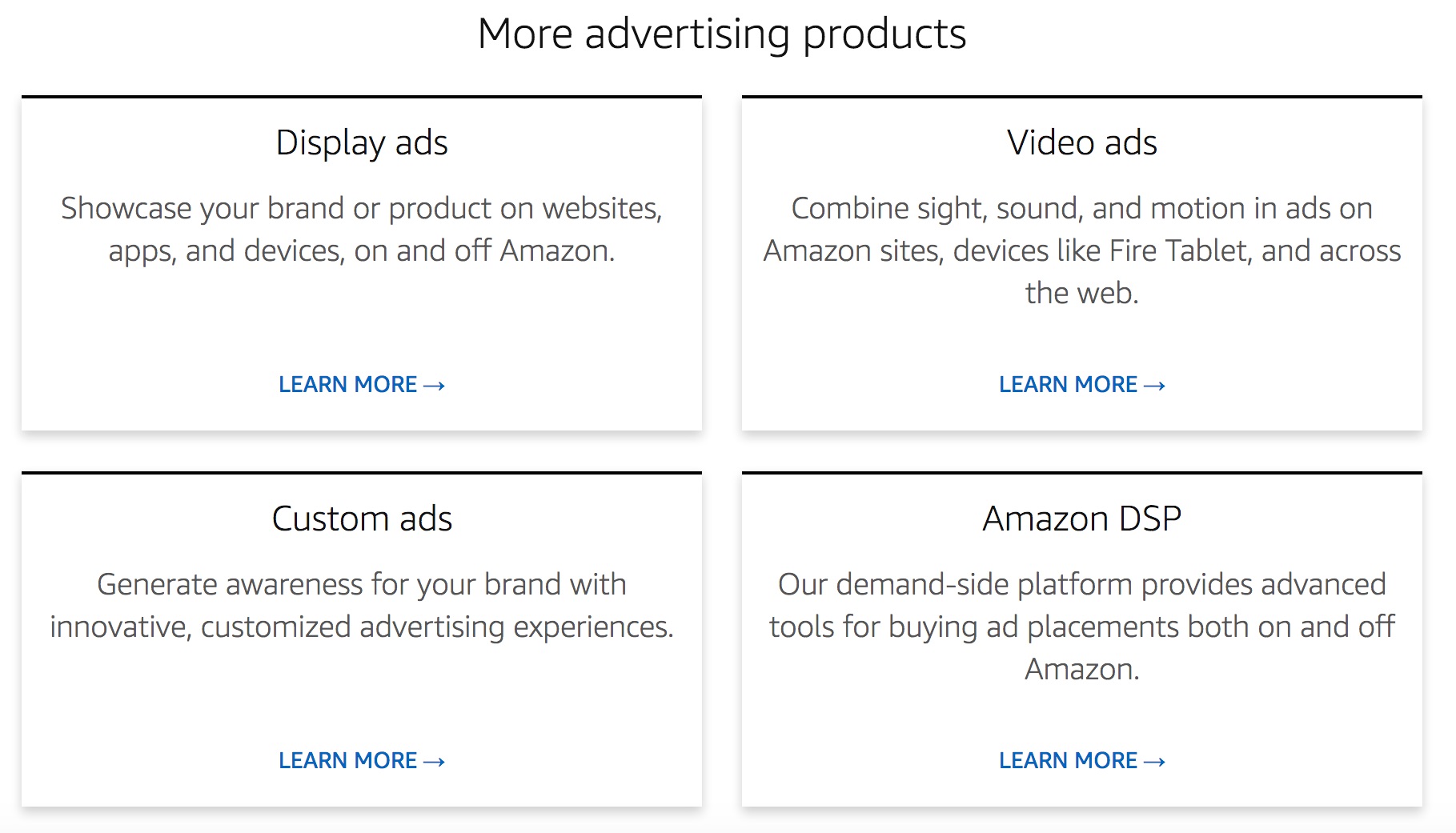
For other effective ways of promoting your products with external traffic, keep reading to the next paragraph.
5. External Traffic and Micro-Targeting will be crucial to promote your products and keep a good rank
We are seeing Amazon turning into a pay-to-play platform by looking at the constant introduction of new features that sellers need to keep up with, looking at how average CPCs are increasing in any category and total ACoS% goes up for most seller. So how can sellers leverage their marketing to decrease total advertising spend and get an increasing amount of sales? Pushing the right external traffic with Micro-Targeting to generate good conversion & ranking will definitely help.
After having managed millions of $ for our clients at Growth Hack Consulting, in pretty much any possible category on Amazon, we started working on external traffic to boost sales and rank with excellent results. In order to find the best combination in terms of income vs outcome (spent budget vs rank and sales) we have tested numerous analytic tools, landing page generators, social media; here’s the flow we saw working best for most products so far:
- Analyze your products best performing keywords from PPC Ads
- Get traffic / search volume insights from you Brand Analytics section
- Find top 5 to 10 keywords you want to rank your product for
- Check your current product rank for each of these keywords
- Check your BSR
- Generate external 1 tracking link for each keyword
- Promote your tracking links via external traffic (Facebook, forums, blogs, influencers, etc.) for at least 1 or 2 weeks in order to see results, a few hundred clicks to the right audience will be enough to see if organic rank moves
- Check your BSR weekly or twice a week.
External traffic allowed us to increase conversion rate, CRT and sales, while lowering total ACoS% for pretty much every product we implemented the above strategy, as it provides higher organic rank that as a result gives better attribution to PPC keywords, for lower CPC, ACoS and higher organic sales. Is it known by many, that one of the factors that influences product organic rank on Amazon is Social Proof, intended as converting external traffic coming from highly ranked domains.
Note: we use 5 to 10 keywords because products on Amazon tend to get most impressions, clicks and sales share from few search terms. Brand Analytics will help you a lot in finding search terms with the highest potential.

It is essential to understand the value of Mirco-Targeting in this whole context. Micro-Targeting can be easily implemented by Amazon sellers in three ways:
#1. Facebook ads: instead of using broad target audiences on your ads in the same group, divide your ad group set into several ad groups, each one with different age ranges, genre, interests – if possible, do not target more than 3 or 4 interests per audience. E.g.: female, 20-44, interest in Health & Fitness (or even better, target interest in ONE of your main competitors). You will notice great improvements and lower CPC. This will allow to spend less budget and get more clicks to your ads. You can actually combine your PPC top targetings with Facebook audiences; we will unveil more about this ranking strategy for products on Amazon on our tutorial in the video below:
This strategy allowed one of our partner’s products to pass for the keyword “running clip for iPhone” from not ranked organically to Amazon Choice in just 10 days with a spend budget of less than $100 for this keyword only.
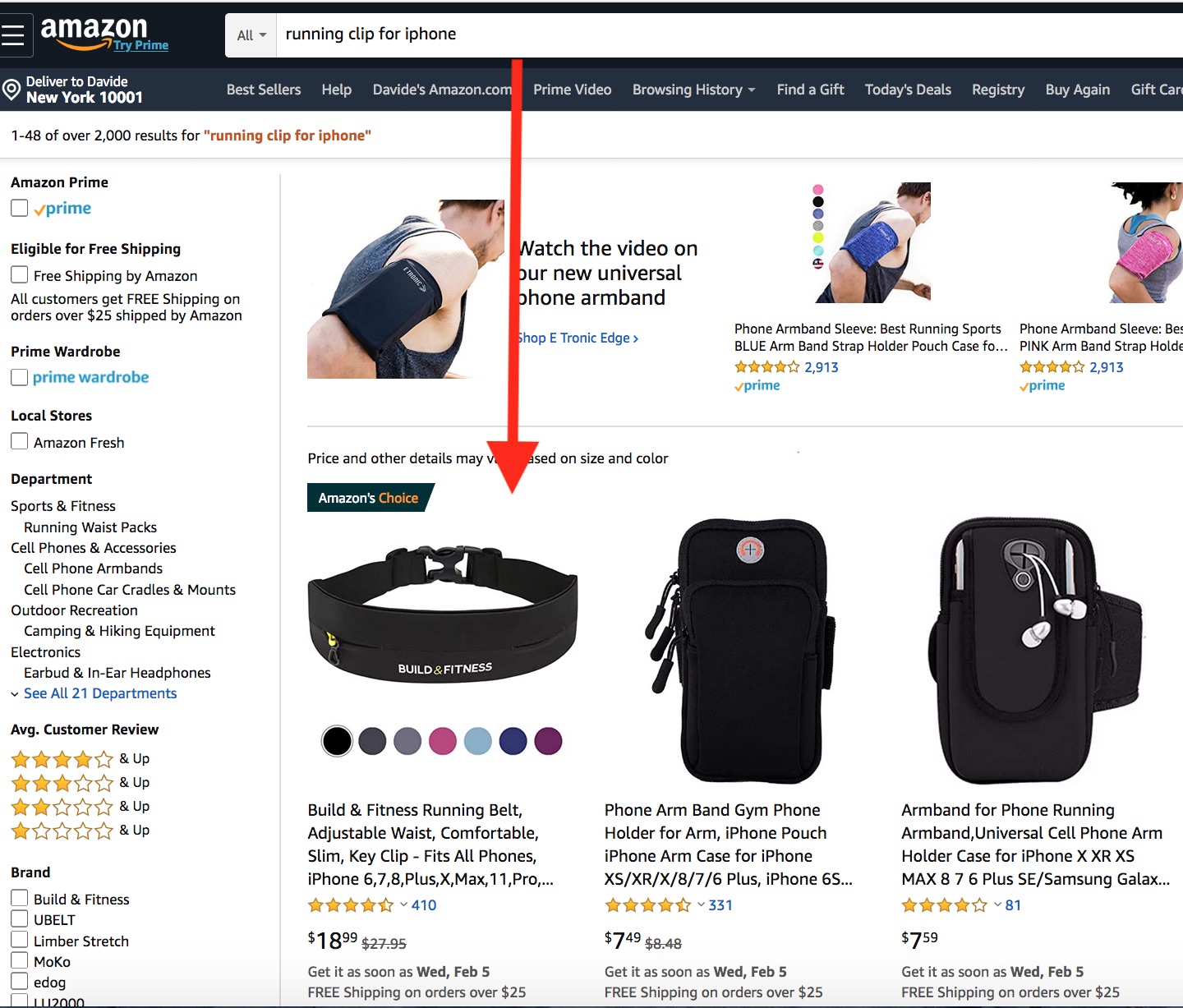
#2. Influencers: Influencers Marketing is on the rise for Amazon sellers, allowing them to uses leaders in a specific industry to share their brand’s products and messaging with a specific audience. Twitter has released a report showing that 49% of consumers seek product recommendations from influencers – almost as much as they do from friends. From business2community:
Keep in mind that the number of followers a potential Amazon influencer has isn’t the most important factor. Instead, focus on influencers who’ve already amassed an audience that would be interested in your product. Often, these will be micro-influencers: influencers with between 1,000 and 100,000 followers who’ve established themselves as an expert in a niche community, such as the influencer featured above who has 20,000 followers.
Fore more info read our Guide for Influencers & KOL Marketing for Amazon Sellers
#3. Amazon PPC: When it comes to PPC, Micro-Targeting can be intended as narrow targeting for one search term or a group of similar-related keywords – EXACT match – or one target product on Manual Campaigns. You can use this kind of keyword targeting mainly in two kinds of campaigns:
– Ranking Campaign: provide PPC support to the 5-10 keywords you want to rank organically. This kind of campaign is probably going to be very expensive, especially if your current organic rank are not optimized.
– Profit / Sales Campaign: download PPC report, filter out best performing keywords that you have gathered from broad, phrase or auto campaigns, target these keywords EXACT only, one keyword in one group or even just one keyword in one campaign. Same thing for product targeting. Remember to remove any duplicate (at match level) from other campaigns if present.
Micro-Targeting option #2 (and sometimes also #1) will not only increase your external traffic but also reduce the risk of having no ads at all as you can’t advertise products that are not allowed by Amazon’s policies on PPC (testosterone booster, other supplements or adult toys, etc.).
6. Automatic Messaging Tools will have to adapt to Facebook Messenger Updates of 2020
Chatbots and automatic messaging tools are definitely on the rise, giving sellers the opportunity to contact each one of their customers or potential customers and leverage reviews, up-sell, provide customer service. Vlad Danilov from ManyChat, has personally talked to an incredible number of Amazon and e-commerce sellers in the past months and here’s the main challenges they are facing:
- Finding the right balance between selling on Amazon marketplace and building your own website while keeping both profitable is still one of the biggest struggles.
- Communication: it is important to build your brand community so you have this challenge by default as an Amazon seller.
- Automation: there so many apps that popped up out there in the past years and it might be hard to keep up with learning. So you have to be conscious of the tools you use to make sure you are running the business efficiently but not overpaying for unnecessary software.
It is good to remind that chatbots existed way before 2018 when Facebook released their API. This took ManyChat to another level and helped to go for their mission is to help businesses grow by building meaningful relationships with their customers through Messenger Marketing, continues Vlad.
In 2019, marketing experts and business owners started to be concerned about Facebook policy changes,which affected them all. Businesses will be allowed to message subscribers within 24 hours of a subscriber last interaction with that Business Page. This is known as the “24-hour messaging window. The most significant change is that messages sent outside the 24-hour window must be tagged with one of these four Message Tags: Confirmed Event Update, Post-Purchase Update, Account Update, or Human Agent. Another important thing is that messages that don’t have a Message Tag will not deliver outside the 24-hour messaging window as of March 4th, 2020.
So each seller will have to get compliant with the new Facebook Messenger policy that will take place in just a few weeks from now (read here on Manychat blog), AND be compliant with the new Amazon policies.
The use of chat bots will be different for every type of business, believes Vlad Danilov:
For example, if we talk about eCommerce businesses, those are always interested in growing their sales, getting more positive & honest reviews, providing the best service by talking to their customers. It is impossible without legit automation, and chat marketing became an essential part of it. It goes even further when ManyChat added SMS and Email channels so that you can re-engage your customers and build long-term funnels. For small businesses like spa salons, clubs, etc. chatbot takes over a part of their marketing and helps them to create new opportunities or build relations with their customers. Also, we already see that AI assistants are growing as well, and it might drastically change how much work chatbots can do. So, I recommend monitoring projects like Janis.ai.
You can check Vlad’s personal project on https://bottology.com/.
7. Black Hat is Still Present and is Mutating
Let’s make things clear. Black Hat IS dying off. At least the Black Hat that we used to know. But as the saying goes: you can’t teach an old dog new tricks. Black Hat is still here, and it’s adapting to the changes. It mainly used to be operated by insiders who were able to leak & bribe out useful information from Amazon’s executives – mostly from China and India, for example downloading A9 reports, PPC reports, getting extreme seller-vendor permissions etc., many of these guys have been fired already as this article reports. You can read a full guide on the “traditional” Amazon black hat and how to protect yourself on our article “War is on: how to beat unfair competition on Amazon”.
So, if bribing your way up to the top isn’t working anymore, algorithm changes too often and fewer people are willing to risk to help you operate your tricks, what is left to do there? We asked Andy from FBAUlous training in Singapore:
Black hat players are getting better and better. They can knock down any sellers by merely using “piggy-back” software that keeps buying their stock and then cancel in bulk. This will cause you to go out of stock very fast and then you are out of the listing. You can see more on this YouTube video. Knowing the black hat tricks are important and guarding ourselves as Sellers is equally essential nowadays and is it getting more of an emphasis for us in 2020.
The scary thing that we are seeing is Amazon slowly growing to be like what the Chinese e-commerce platform Taobao was two years ago. From all the experiences they have from Taobao, Chinese sellers are slowly growing and adapting to what the market forces and needs.
Some examples:
Taobao’s one-minute Customer Service: Amazon wants sellers to answer Customers Questions faster, within 24 hours now. Live selling broadcast: Taobao has been doing this for at least two years now – Amazon streaming on Social Media too. Random search result page in Taobao – One day Amazon may be heading towards this when you search something in Amazon, your results may not be based on your BSR or keyword relevancy anymore, it could be random. So what many Amazon Sellers are putting in many listings of the same item and this caused Amazon to be spending more time spotting and merging listings. These are the tricks that Chinese eBay & Taobao Sellers have been using for a very long time.
Scary? Well, if this didn’t care you YET, just know that as of January 2020, there are more Chinese Sellers on Amazon.com than US based. You can read this post for more insights about the real Secrets Behind the Success of Chinese Amazon Sellers.
After 6+ years of making a living selling via Amazon, I had to walk away for exactly these reasons. It’s extremely scary to put your livelihood in a system that rewards black hat tactics, and ultimately you have no control over anything.
This is just one of the many similar that you can read on forums, blogs and Reddit. I am going to link an interesting thread where US-based Amazon sellers are reacting to Black Hat and other illegitimate tricks with the help of OMG (Online Merchants Guild):
US FBA Sellers Against Foreign Amazon Blackhat Sellers – Advocacy Group.
8. Identifying a Reliable Source for Your Products is Vital to Your Success
“The Trade War may or may not escalate but in order to be better prepared for such events and not be caught off guard, sellers need to diversify their sourcing markets”, says Meghla Bhardwaj, former head of content marketing at Global Sources and founder of India Sourcing Trip:
In addition, production costs in China have been increasing, and will continue to gradually increase. More sellers have realized they shouldn’t put all their eggs in one basket, and implement a China + 1 strategy, which will help them stay competitive in the long-term. China is the only market in the world that can manufacture any and all products, and is not replaceable as a sourcing market. However, other markets such as India, Vietnam, Indonesia will increasingly play an important role in the supply market, and continue to become competitive, especially for labor intensive products.
Sourcing from alternative markets can bring some real advantages continues Meghla such as:
– Small MOQs: Many countries such as India, Vietnam and Indonesia offer low MOQs, which is a big advantage for Amazon sellers who wants to source in smaller quantities. – Unique products: Many of these countries offer unique products that help Amazon sellers differentiate their brands. – Raw material availability: The local availability of raw materials is another advantage many of these countries have. For example India is the second largest producer of cotton in the world, and has wide availability of other materials such as wood, silk, metal. – Lower labor costs: labor costs in these countries can be lower than they are in China.
Another very recent reason to differentiate your product sources if you’re only relying on China is taking in consideration the potential mid-to-long-term effects that will have the spread of Corona Virus in China and in the nearby areas. A large part of the population might not be able to go back to work as a precaution against an even larger number of infections all around the country:
The coronavirus epidemic is spreading fast in China. Just heard in a Wechat group that Guangzhou may go into lockdown, and the Yiwu market is closed until Feb 21! However, there will certainly be some impact on production, exports, and Amazon / e-commerce sellers. The government has asked factories not to re-open after CNY holidays until 15 Feb and for workers to delay their return as much as possible. What to expect: uncertainty, disruption and delays in production, labor shortages as workers won’t come back to factories, quality issues as factories rush to process orders when they open.
For more info about India Sourcing Trip you can visit their webiste here and register for the next trip, or join their Facebook group.
One more thing to be extremely careful in 2020 will be how to optimize your costs. The cost of Amazon FBA is constantly increasing and it will be even higher in 2020. There might be some new hidden fees that you might have missed, in that case we strongly recommend to take a look at this post: FBA Calculator – Hidden Fees All Amazon Sellers Should Know About
Finlly, product quality and safety will be extremely important in 2020. Amazon will increasingly focus on ensuring all products selling on the marketplace are safe and meet all regulations, It will be very important for sellers to Source Products that are safe and compliant.
9. New Marketplaces & Opportunities to Look at in 2020
Amazon marketplace has opened in The Netherlands, taking on Bol.com and opening Amazon.nl. This new marketplace is #6 in Europe, not counting Turkey. Last year Amazon also opened in Singapore. What will be the next step? Someone says the online giant is looking at the African continent:
VOA News reported that Black Friday sales throughout Africa in 2019 were 1,331% higher than normal sales. In Jumia’s home country, Nigeria, they saw average sales of $60 per shopper. In South Africa, Shoprite’s home country, they saw almost $120 per shopper. Not to mention, First National Bank of South Africa reported $169 billion (USD) worth of sales during the shopping holiday. And massive holiday sales aren’t the only thing that makes Africa an attractive battleground for online retail giants like Amazon and Alibaba. Just this year, the African Union announced the Africa Continental Free Trade Area (AfCFTA). It will allow free trade among Africa’s 54 nations, similar to that of the European Union or the North Atlantic Free Trade Agreement (NAFTA). The trade agreement is expected to boost job growth as well as the overall GDP of Africa. How will Amazon respond? Our prediction isn’t that Amazon will enter the market to compete with Jumia and Shoprite. Instead, we predict that Amazon will acquire one or the other, the same way they did with Middle Eastern online retailer Souq, in 2017 (Souq is now Amazon.ae). – Junglescout.
Just like Amazon, the current South-East Asian (SEA) marketplaces growth is incredible and platforms like Lazada and Shopee are revolutionizing the way people buy and sell products in countries as Thailand, Indonesia, Malaysia, Singapore, The Philippines and many others. Sellers have various ways to tap these marketplaces, adds Andy from FBAUlous:
Drop Shipping: it is one of the fastest and most cost-efficient methods to start and there are tons of factories and websites that can assist you in. The main downside to drop-shipping is that this might not be the most suitable option for a long-term business when you are looking into brand building and brand awareness. Lazada and Shopee have a unique global selling plan for China and Hong Kong based companies (of course with good previous track records in online selling) that will be allowed to sell in all the SEA countries within the You can also opt for fulfillment by Lazada and Shoppe’s various shipping sites in China (Shenzhen, Yiwu etc.) to send your item to the various SEA countries at a very reasonable price. Using local Fulfillment Centers (FC), just like FBA is another choice you can think of. Lastly, you can also still do it the “old fashion” way by using Self-Fulfillment in your own Country – similar to FBM. South East Asian market is becoming huge, mostly due to better logistics network that have been developed over the recent years, creating a bigger and better reason system for eCommerce sellers to flourish.
When it comes to other opportunities outside of Amazon, you might want to take a look at Walmart. The retail giant of the U.S., that is already the largest company in by revenue, has been putting a lot of efforts that costed in big losses, but the company is determined to take on Amazon in the e-commerce game:
Marketers can now buy ads on Walmart.com programmatically through a self-serve platform. Additionally, it’s making its ad inventory available through its API and several ad-technology partners. Previously, Walmart required marketers to use its managed services to launch campaigns across its various digital properties and in its stores. The move is a major step for Walmart to make its e-commerce operations profitable. It lost about $1 billion from its investments in e-commerce last year, and that number may continue climbing in 2020. It launched a $98 same-day grocery delivery annual subscription that management plans to expand to general merchandise from its SuperCenter stores. And Walmart e-commerce boss Marc Lore said he doesn’t think that program will be profitable on its own. Instead, he sees it as a way to attract more consumers to Walmart.com on a regular basis, which will fuel more profitable segments including advertising sales. – The Motley Fool.
While Amazon is now accountable for about 38% of all online sales in the U.S., Walmart stays at about 4.7%, up from 2.6% just three years ago. Considering the constant growth of ecommerce globally, it definitely makes sense for such a huge company to lose money in order to be number one. Sellers might benefit in the mid-long run with cheaper ads, cheaper fees, more convenient deals and (hopefully) a less monopolized market where one player takes all. After all, selling just on Amazon is simply not enough if you want to play big.
Last but not least, I definitely agree with those who say that Single’s Day is going to be big on Amazon quite soon. Take a look of how Black Friday entered Europe since the past few years, without being an European tradition at all: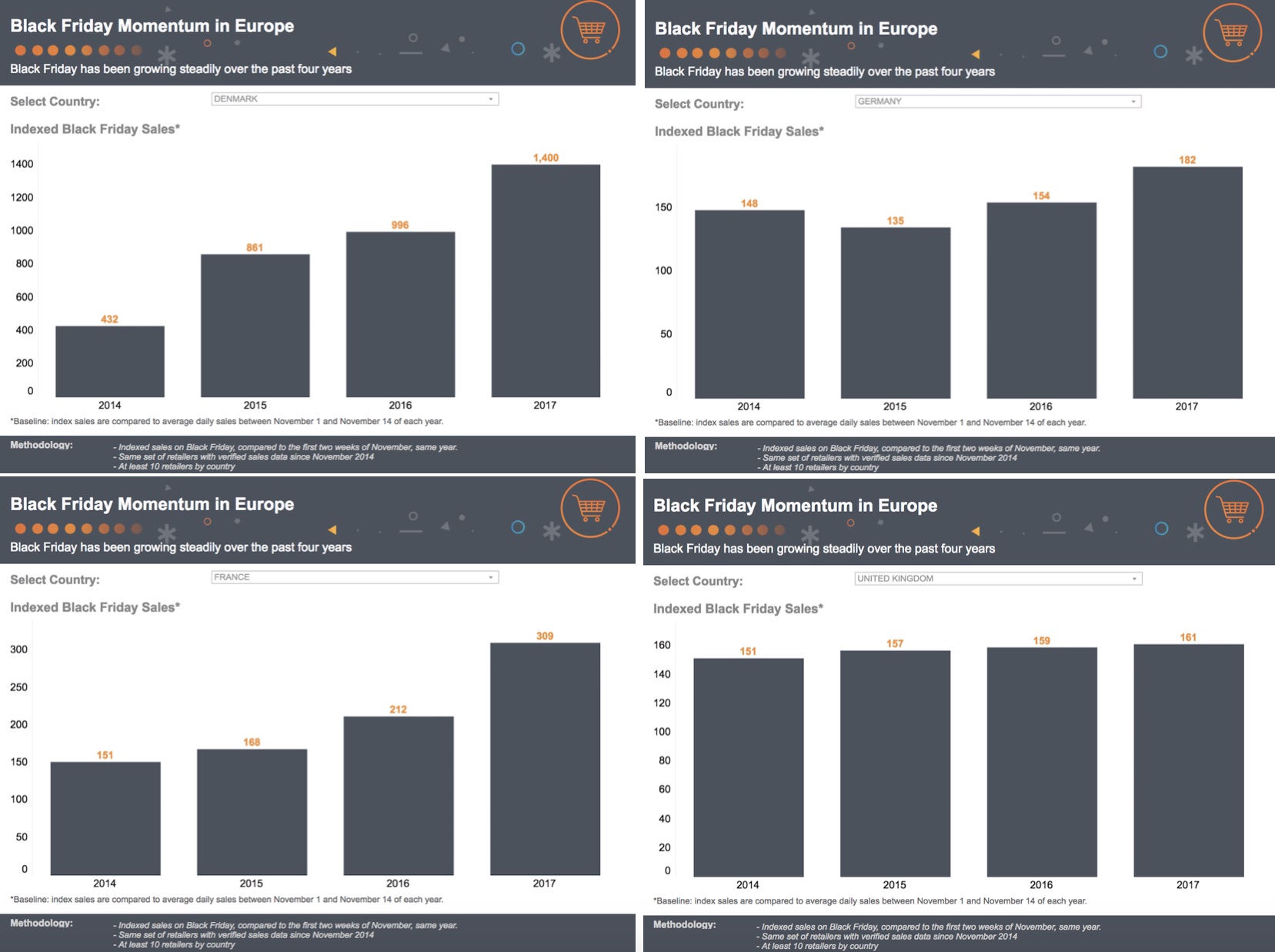
Black Friday sales growth in United Kingdom, Germany, France, Denmark – Criteo.com
As the markets grow, so grow the opportunities for sellers to promote their products. Considering as well the presence of Chinese people not only in the States but as well in Europe and any other part of the world, I’d say that we might see this sales day become big quite soon. Don’t expect the $38Billions of Alibaba in one day, but definitely get ready for it.
10. Conclusion – Looking at the Future
I’d like to conclude with few tips that Liran Hirschkorn disclosed for both new and old sellers after speaking in front of and meeting 1000s of sellers last year:
Amazon is an amazing platform and business opportunity. I’ve met so many sellers who literally started 2-5 years ago and have sold their brands, planning to sell, or have built up a very valuable business – at the same time there are way more sellers struggling – those that have been conned that it takes $5000 to start and you will become a millionaire from that – its much harder to do that in 2020 than in 2012-2015 before the review Armageddon of October 2016. Along my journey I’ve also learned that once you know the basics of success on Amazon, the rest of your success comes from the masterminds, the networks, the seller friends you make on the way – it won’t come from buying the next shiny object course, but it can come from the people you meet and form relationships along the way who can share best practices and making valuable introductions to you in your business.
For new sellers – realize that your first product may very well fail and use it as a learning opportunity – most businesses fail in the first year but with Amazon we’ve generally seen higher success rates – as the game gets harder and the world economy shifts, you may see more failures – however don’t let that stop you – know that early failures are part of the learning process and if you persevere and learn you can absolutely do this with the right approach and capital.
Experiences sellers – Make sure you have a vision for your business in 2020, from there work to strategy then tactics – too many sellers are so focused on tactitcs, when the vision is actually where you need to start.
To sum it up, 2020 is definitely going to be another exciting year. Make sure to stay ahead of the new policies that will come out, follow the global news, and focus on just one thing: quality.
Make sure your products have the right quality, prevent complaints and returns. Be original not only in the products you source but also in the way you market them. Find the right focus on specific market niches, keywords, interests. Don’t stop learning from others and sharing your experience. I think that the beauty of being an online seller is not only given by the monetary income but also by the community that creates this whole system and the freedom & better lifestyle you can obtain by being a successful seller, brand, consultant, service provider, trainer, and so on.
If you made it this far, I want to say a big THANK YOU for reading this post and please leave a comment below if you found it useful or if you have anything to say.
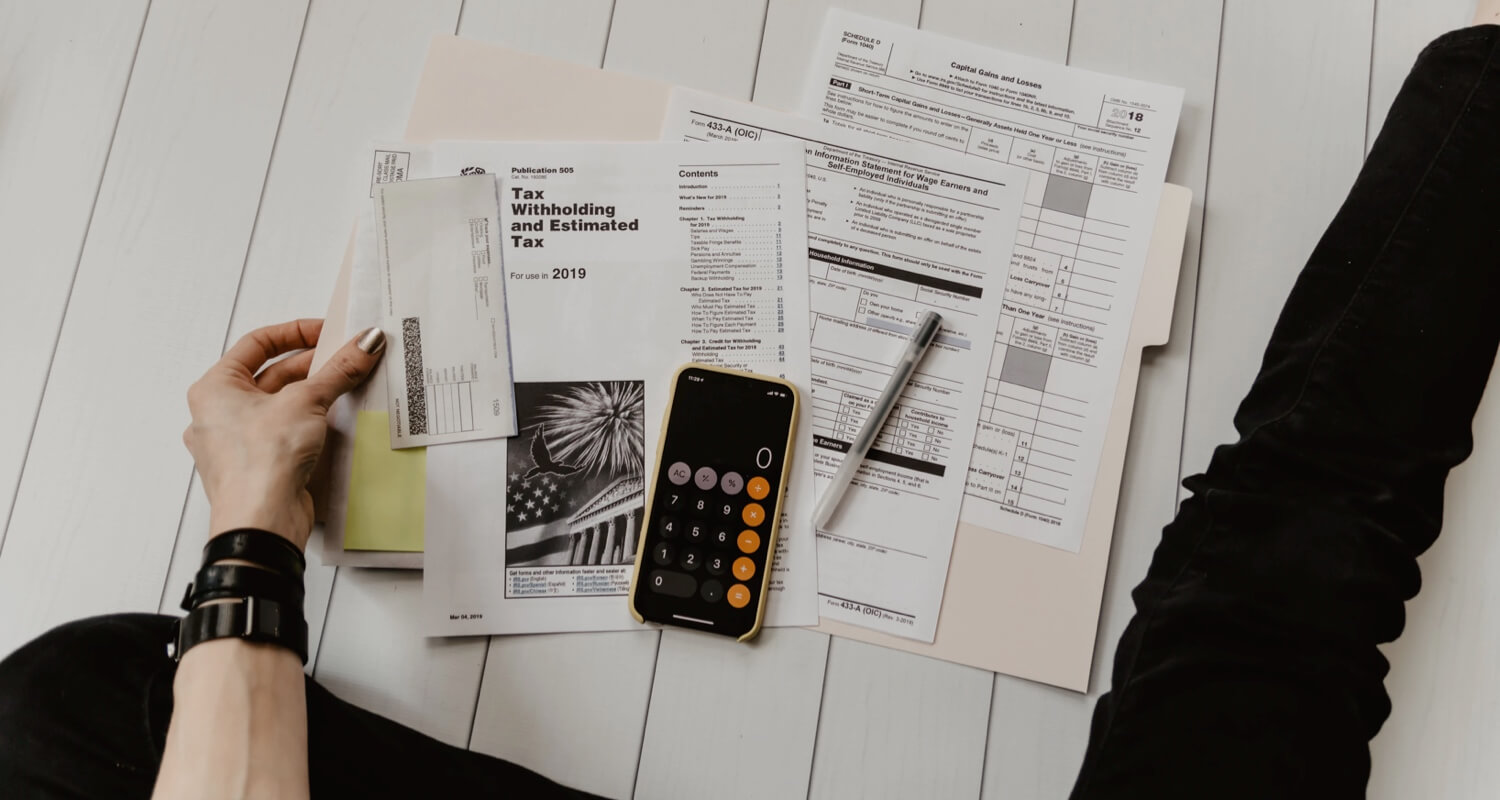
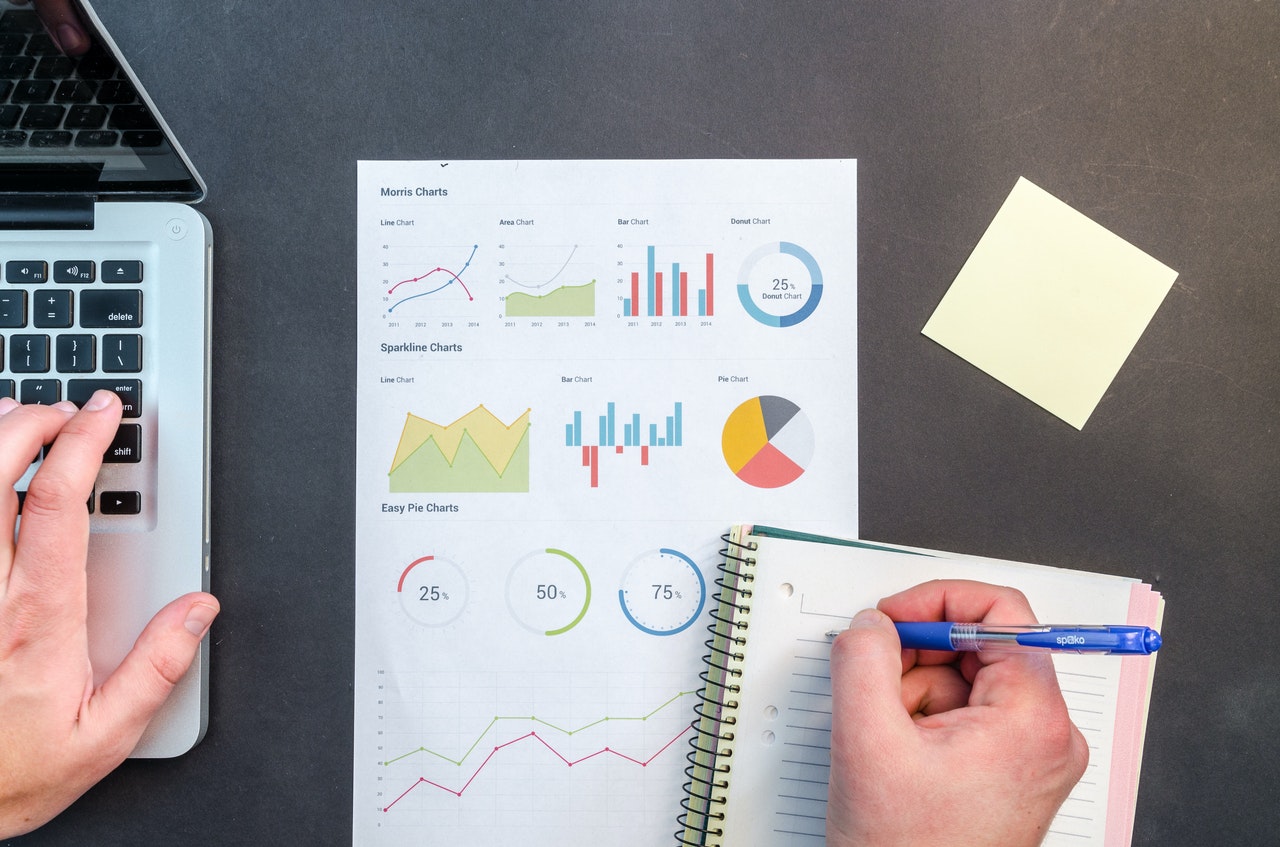


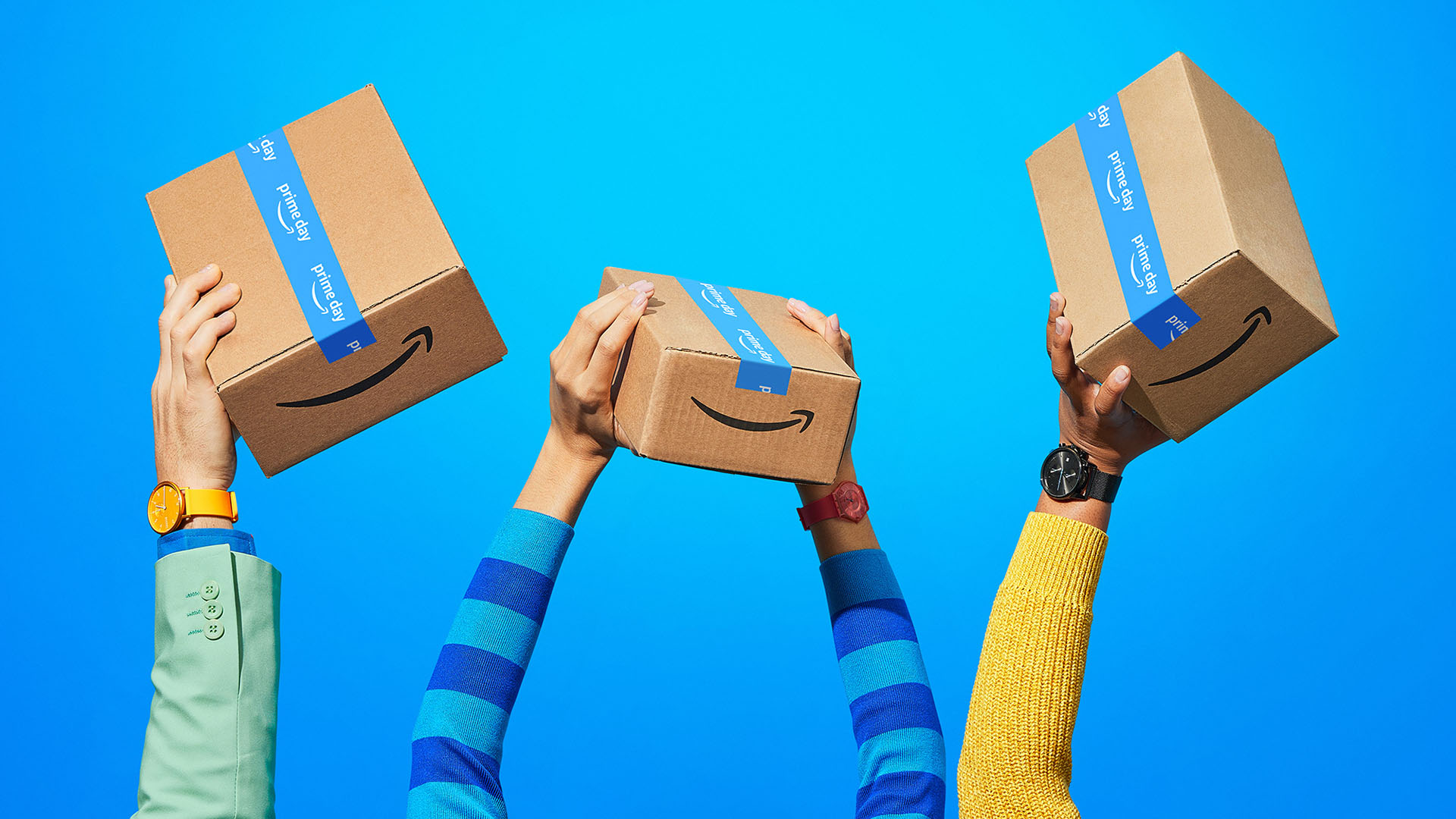
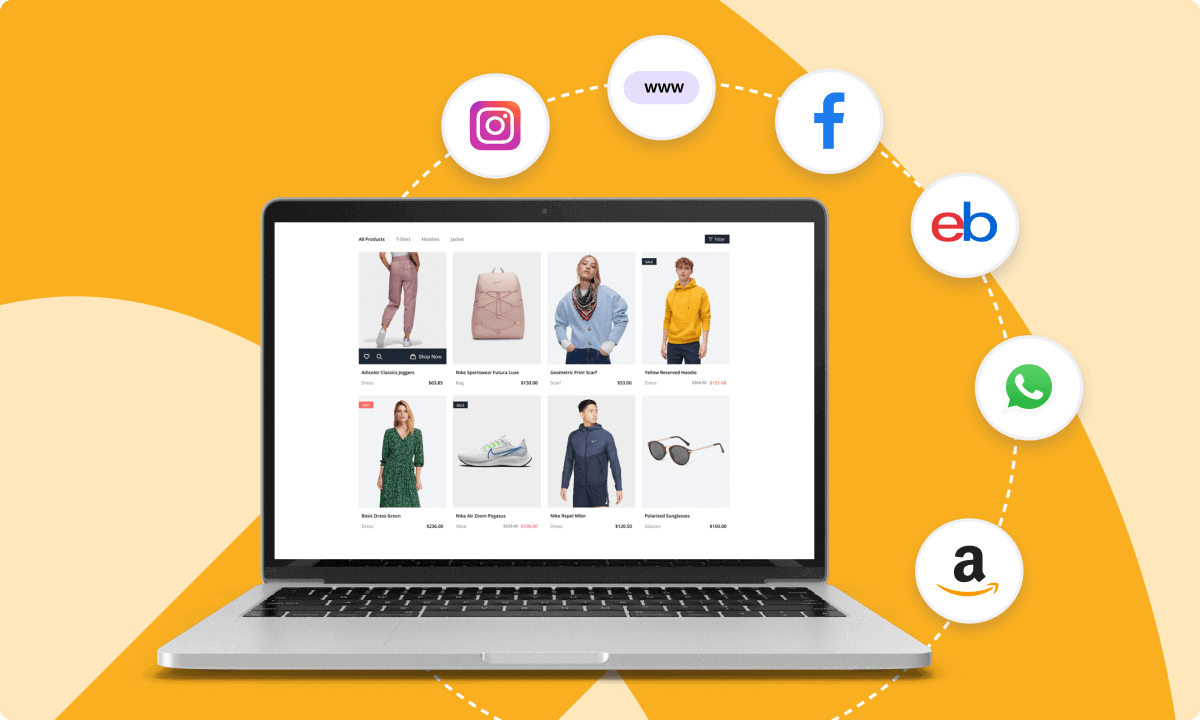
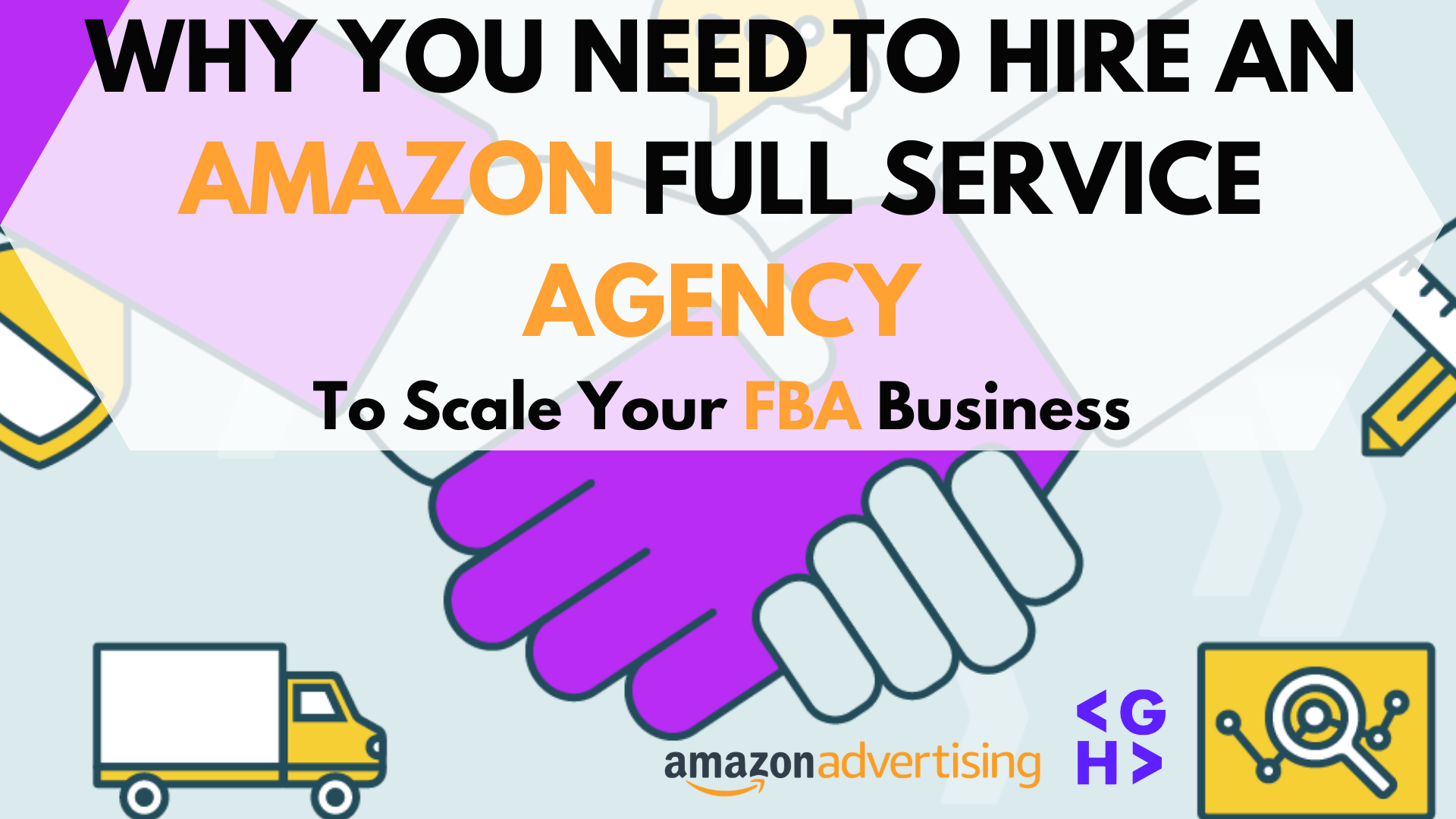

The Secrets Behind the Success of Chinese Amazon Sellers Revealed
[…] it coming, but we didn’t see it coming THAT bad when we first wrote this original post about Amazon predictions for 2021. Read here the most recent post about what Amazon Sellers should do to keep their business alive […]
War is On: How to Fight Unfair Competition on Amazon - Updated 2021 - Wearegrowthhack Black Hat & Dirty Tricks
[…] it coming, but we didn’t see it coming THAT bad when we first wrote this original post about Amazon predictions for 2020. Read here the most recent post about what Amazon Sellers should do to keep their business alive […]
TikTok: How this new App can Help You Sell more Products on Amazon FBA & Dropshipping - Marketing & Promotion Tips - Wearegrowthhack
[…] ideal customer. We have already explained the importance of understanding your niche and how to operate Micro Targeting on and off Amazon to obtain better results with your Advertising Campaigns. In 2020 Amazon/Ecom sellers are understanding the value of great branding and how to operate a […]
เว็บหนังออนไลน์
I think this is among the most significant Amazon FBA info for me.
And i am glad reading your article. But wanna remark on few general things, The
website style is wonderful, the articles is really nice : D.
Good job, cheers
where to buy nipple clamps
This is a very good tip especially to those fresh to the blogosphere.
Simple but very accurate info… Thank you for sharing this one.
A must read article!
FBA Sellers Trends & Predictions 2022 - Sell on Amazon, Advertising, External Traffic, Supply Chain, Influencers & more - Wearegrowthhack
[…] viewed topics on our blog. You can find other years here (Amazon FBA Trends & Predictions 2021, Amazon Sellers Trend & Predictions 2020). Now let’s see what Amazon has for us in 2022. […]